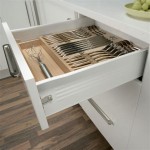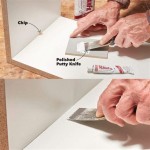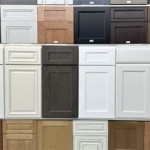Kitchen Cabinets Cleaning: A Comprehensive Guide
Kitchen cabinets, being the focal point of the kitchen, are constantly exposed to a range of elements including food splatters, grease, and dust, leading to buildup and a less-than-desirable appearance. Regular cleaning is essential to maintain their aesthetic appeal and hygiene. This article will guide you through the process of thoroughly cleaning your kitchen cabinets, addressing key areas such as cleaning materials, preparation, and specific cleaning techniques.
Essential Cleaning Materials
To effectively clean your kitchen cabinets, you will need to gather the following materials:
- Microfiber cloths: These cloths are highly absorbent and gentle, minimizing scratches on cabinet surfaces.
- Soft-bristled brush: A brush is useful for removing stubborn debris from crevices and details.
- Dish soap: Dish soap can be used as a mild cleaning agent for general dirt and grime.
- Baking soda: This natural abrasive effectively removes grease and grime without damaging the cabinet finish.
- White vinegar: Vinegar acts as a natural disinfectant and helps to eliminate odors.
- Warm water: Warm water helps to loosen dirt and grime for easier removal.
- Optional:
- Lemon juice: Lemon juice can be added to your cleaning solution for a fresh scent and additional cleaning power.
- Mineral oil: Mineral oil can be used to polish and protect wooden cabinets.
Preparing Your Kitchen Cabinets for Cleaning
Before you begin cleaning, it is necessary to prepare your kitchen cabinets to ensure a thorough and efficient cleaning process. This involves:
- Emptying the cabinets: Remove all contents, including food items, utensils, and any other belongings. This will provide ample space for cleaning.
- Disassembling removable parts: If your cabinet doors or shelves are removable, take them off for easier cleaning. This allows you to reach all areas thoroughly.
- Dusting: Use a dry microfiber cloth to dust the cabinet surfaces and remove any loose debris.
- Pre-cleaning: Wipe down the cabinets with a damp cloth to remove any remaining dust before proceeding with the deeper cleaning.
Cleaning Techniques for Different Cabinet Materials
The cleaning techniques you employ will depend on the material of your kitchen cabinets:
Wooden Cabinets
Wooden cabinets require a gentle approach to avoid scratching the surface. Here's how to clean wooden cabinets:
- Mix a cleaning solution: Combine warm water with a few drops of dish soap and a tablespoon of baking soda. You can also add a few tablespoons of white vinegar for added cleaning power.
- Apply the solution: Dip a microfiber cloth into the solution and gently wipe down the cabinet surfaces. Pay close attention to areas prone to grease and grime, such as the cabinet doors and handles.
- Rinse and dry: Rinse the cabinet surfaces with clean water and dry thoroughly with a microfiber cloth. Avoid leaving any moisture on the wood, as it can lead to warping or damage.
- Polish: For extra shine and protection, apply a thin layer of mineral oil to the wooden surfaces and buff with a clean cloth.
Laminate Cabinets
Laminate cabinets are more durable and can withstand stronger cleaning agents. Here's how to clean laminate cabinets:
- Mix a cleaning solution: Combine warm water with a splash of white vinegar and a few drops of dish soap. You can also add a few tablespoons of baking soda if necessary.
- Apply the solution: Dip a microfiber cloth into the solution and wipe down the cabinet surfaces. Pay attention to any sticky areas or fingerprints.
- Rinse and dry: Rinse the cabinet surfaces with clean water and dry thoroughly with a microfiber cloth.
Painted Cabinets
Painted cabinets require a gentle cleaning approach to prevent damage to the paint. Here's how to clean painted cabinets:
- Mix a cleaning solution: Combine warm water and a few drops of dish soap. You can also add a small amount of lemon juice for a fresh scent and additional cleaning power.
- Apply the solution: Dip a microfiber cloth into the solution and gently wipe down the cabinet surfaces. Avoid scrubbing vigorously, as this can damage the paint.
- Rinse and dry: Rinse the cabinet surfaces with clean water and dry thoroughly with a microfiber cloth. Avoid leaving any moisture on the paint.
After cleaning your kitchen cabinets, remember to replace the contents and reassemble any removable parts, ensuring everything is back in its proper place.

Kitchen Cabinet Cleaning Tips For Stained Or Painted Cabinets

How To Clean Your Kitchen Cabinets

How Often Should You Really Clean Your Kitchen Cabinets

How To Deep Clean Kitchen Cabinets And Keep Them Looking Gorgeous Everyday Skate

How To Clean Kitchen Cabinets Dianella Polishing

How To Clean Kitchen Cabinets 9 Basics Bob Vila

Ultimate Guide To Cleaning Kitchen Cabinets Cupboards Foodal

Cleaning Tips For Your Newly Refaced Kitchen Cabinets Kcr

How To Clean Tough Grease From Kitchen Cabinets The Times Of

How To Clean Wood Kitchen Cabinets Like A Boss Shelfgenie
Related Posts








